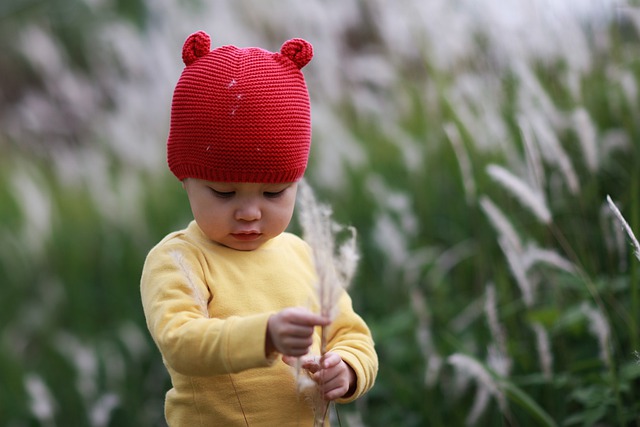In previous posts I have discussed Judson Brewer’s concept of the habit loop underpinning anxiety, addiction and craving and his mindfulness processes for overcoming anxiety. Central to his process for overcoming anxiety, is understanding the trigger-behaviour-reward process, the need to honestly and openly explore the realised rewards and costs of a particular behaviour and the willingness to update the reward value in our mind in the light of this learning. In this post on barriers to using Judson’s process to overcome anxiety, I will explore further some of the ideas presented in his book, Unwinding Anxiety: Train Your Brain to Heal Your Mind. I will also link this discussion to other ideas on barriers to mindfulness that I have written about earlier.
Barriers to overcoming the anxiety habit loop
Below are some of the barriers I have identified in reading Judson’s book but supplemented by my earlier discussions:
- Obsession with the news – we can feast on the news as if our lives depended on it. At every opportunity, we might be seen accessing our mobile phones to find out the latest news. We can do this while waiting, instead of using this down-time to build our awareness. The problem is that the news is typically dominated by adverse events and people’s suffering as well as portents of disaster. It is often unnerving, adds to anxiety and causes disquiet. If we become obsessed with the news, we are not creating the space for stillness and calm that would enable us to be mindful about our habituated behaviour and its real rewards (outcomes).
- Closed worldview – pursuing the news is what Judson describes as “deprivation curiosity” where our motivation is to address a deficit in our knowledge where the reward is discovery of the up-to-date information. However, this process constitutes a closed system because closure is achieved once the void (missing information) is filled. We can also adopt a closed worldview by trying to protect ourselves from disconcerting or uncomfortable information, and related feelings, about our habituated behaviour and its impact on our wellbeing and the welfare of others. Judson argues that what we need to pursue is “interest curiosity” where the process of curiosity is reward in itself because it is open-ended, never dries up and exposes us to the rewards of joy, wonder and awe. He suggests that interest curiosity feels better when we compare it to “the scratchy, closed-down itch of deprivation”.
- Review and regret approach – this habituated behaviour constitutes another closed circuit in that it leads us to self-flagellation and negative self-appraisal whenever we revert to our bad habit or make a mistake. Judson suggests that what is needed here is “forgiveness and moving on and up”. This reflective approach opens the way to real learning and sustained habit change. We can beat up on ourself for mistakes but this only feeds the anxiety habit cycle and contributes to depression. In contrast, If we adopt a growth mindset, we can see each experience, and attempt to overcome our anxiety habit loop, as an opportunity to learn and grow. Our actions serve to give us feedback about outcomes, both intended and unintended – and this is the way we learn.
- Lacking persistence – in this era of the desire for immediate satisfaction, it is easy to lose heart and give up before our goal is realised, even if we have made some progress along the way to reducing our anxiety level. We can overlook the fact that our habituated behaviour has been developed over many years and, in some instances, has resulted from a traumatic event or adverse childhood experience. It will take a concerted effort over an extended period of time to overcome an anxiety habit loop. Judson suggests that it will take “short moments, many times” and a willingness to persist with the process of “kind curiosity” to unearth our anxiety habit loop and the underpinning reward system.
- Unchanged reward value – we can mindlessly accept the existing reward value that keeps our anxiety habit loop locked in thus creating a barrier to change. Alternatively, we can actively seek to update our reward value with disenchanting information (which we typically ignore). We tend to see only the positive aspects of a habituated behaviour (e.g. avoidance of discomfort, pain, embarrassment or hurtful self-disclosure). Judson likens this barrier to a “chocolate experiment” where people failed to realise when eating more and more chocolate turned an otherwise pleasurable experience into one that caused displeasure. We can either not notice or ignore the “turning point” and fail to develop a real updated, assessment of a reward value. This often occurs with people whose underlying anxiety drives a habit of procrastination.
- Focus on reasoning rather than feeling – Judson argues that thinking and rationalisation will only go so far in terms of sustainable habit change. While as humans we need thinking to problem solve, be creative and plan, rational argument has little impact on entrenched habits. A more holistic approach of sustained personal inquiry is required to unearth not only our thoughts but emotions and bodily sensations that inform us about what is happening in the moment when we resort to our habituated responses. Focusing on our feelings in the moment gives us a way to understand the drivers behind habit formation and maintenance, and enables us to develop the requisite insight to update our “reward value” of the habituated behaviour.
Ways to overcome the barriers to unwinding anxiety
In his Unwinding Anxiety book, Judson discusses a one-week silent retreat that he and a colleague provided for members of the US women’s Olympic water-polo team (who were back to back gold medal winners). He explained that a real breakthrough for members of the team in developing holistic, interest curiosity was achieved by having participants repeat the sound “hmm” as a mantra. This sound when repeated tends to engender openness, wonder and awe while clearing the mind of its tendency to engage in worry and negative self-judgment. Judson suggests that this practice can be employed whenever we become stuck in our meditation attempts, experience panic or encounter internal barriers to overcoming our anxiety habit loop. It enables us to tap into bodily sensations, thoughts and emotions.
Judson also provides a process for experiencing a closed versus an open mindset. This entails recalling in full colour and richness an anxious event followed by recalling a joyful event. He explains that this process of observing bodily sensations generated by the different events forms part of the first day of his Unwinding Anxiety app.
Another source of encouragement to maintain persistence and adopt an open, learning mindset is provided by Lulu & Mischka in their mantra meditation, Metamorphosis. The words of this mantra effectively describe the process of the sustained effort and open mindset required to achieve transformative change and encourages us to “not give up” but “trust the process” and be open to breaking with our old ways. If we sing the mantra along with Lulu & Mischka, we can reinforce our desire to persist until we overcome our anxiety habit.
Reflection
Clearly the unwinding anxiety process proposed by Judson has application in many arenas, including in sports. This got me thinking about an issue I am having with my tennis game when playing social tennis. I have played tennis since I was about 12 years old (and probably earlier but I can’t think back that far). I have used a single-handed backhand all my life but as I get older, my wrists and arms are becoming weaker (despite my occasional efforts to strengthen them with exercises). So, for my 75th birthday, I requested three tennis lessons from a coach to learn how to do a double-handed backhand. By the end of the third half hour lesson, I could manage a rally with the coach using my newly “acquired” double-handed backhand. The problem is that I am experiencing an emotional blockage that is stopping me from using the new stroke at social tennis – I keep reverting to my single-handed backhand.
When I read about the habit loop and the need to change/update the reward value (in my mind) attributed to a particular behaviour in order to change the habit, I realised that what was keeping my old habit (single-handed backhand) in place was the failure to update the reward value of this behaviour. I still seemed to be assuming that it was a reliable stroke preventing me from making mistakes and enabling me to keep the ball in play or win a rally. The reality is that my single-handed backhand is no longer reliable and I do make lots of mistakes with it. So I need to update the reward value that I attribute to this stroke and accept that in the earlier stages of a changeover to the new double-handed stroke, I will probably make more mistakes. However, the bigger, better offer (BBO) is a stronger, double-handed stroke capable of winning a rally. By being unwilling to use my double-handed backhand, I am adopting a closed mindset and depriving myself of the opportunity to learn through doing and reflecting on the outcomes.
As we grow in mindfulness through reflection, kind curiosity and mantra meditations, we can develop the persistence and courage to explore our anxiety habit loop and its reward value. With a sustained concerted effort, we can begin to overcome our anxiety habit loop as we update our reward value and develop substitute rewards that are bigger and better than what we currently rely on, consciously or unconsciously.
_____________________________________
Image by Rudy and Peter Skitterians from Pixabay
By Ron Passfield – Copyright (Creative Commons license, Attribution–Non Commercial–No Derivatives)
Disclosure: If you purchase a product through this site, I may earn a commission which will help to pay for the site, the associated Meetup group, and the resources to support the blog.









